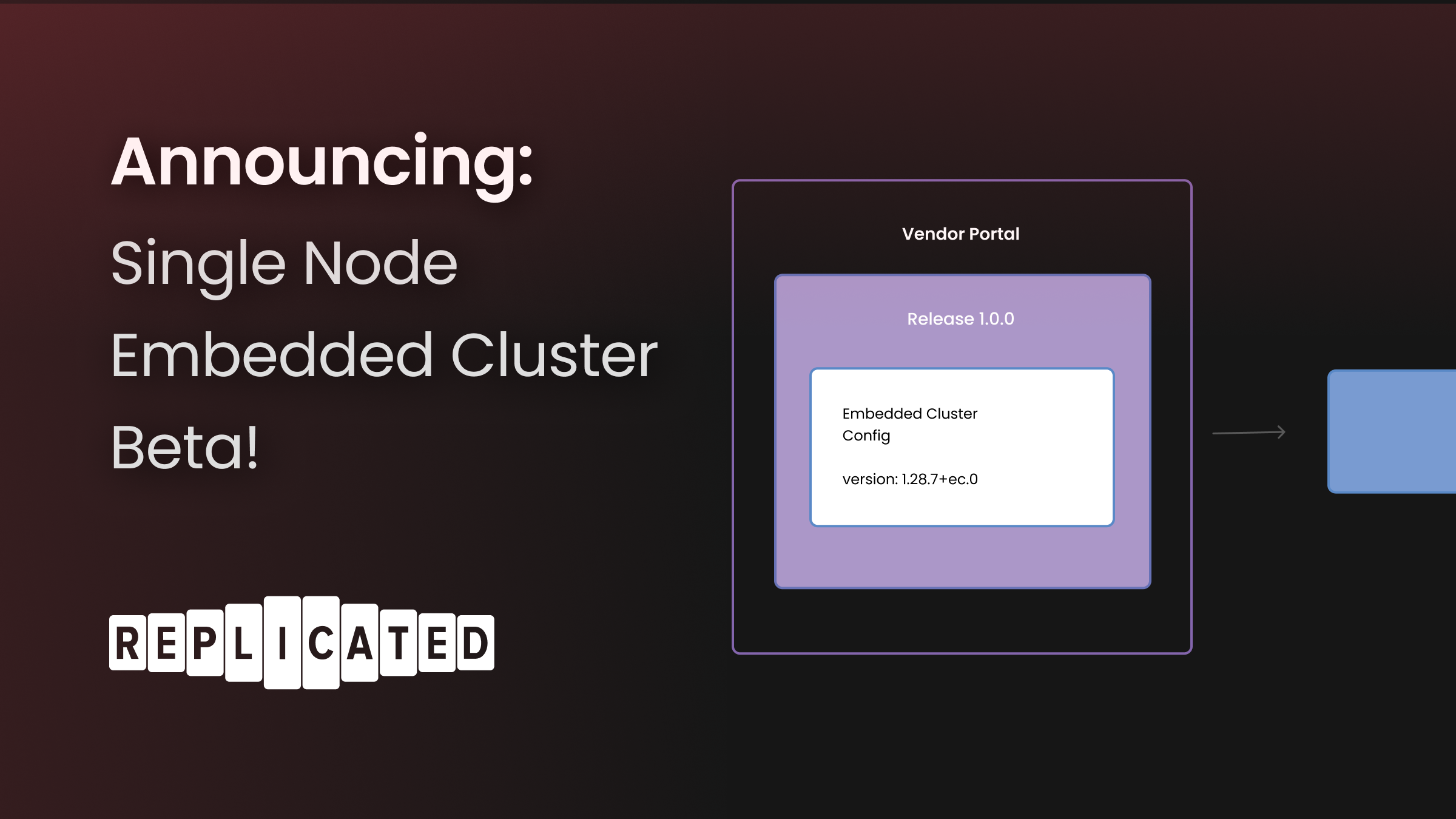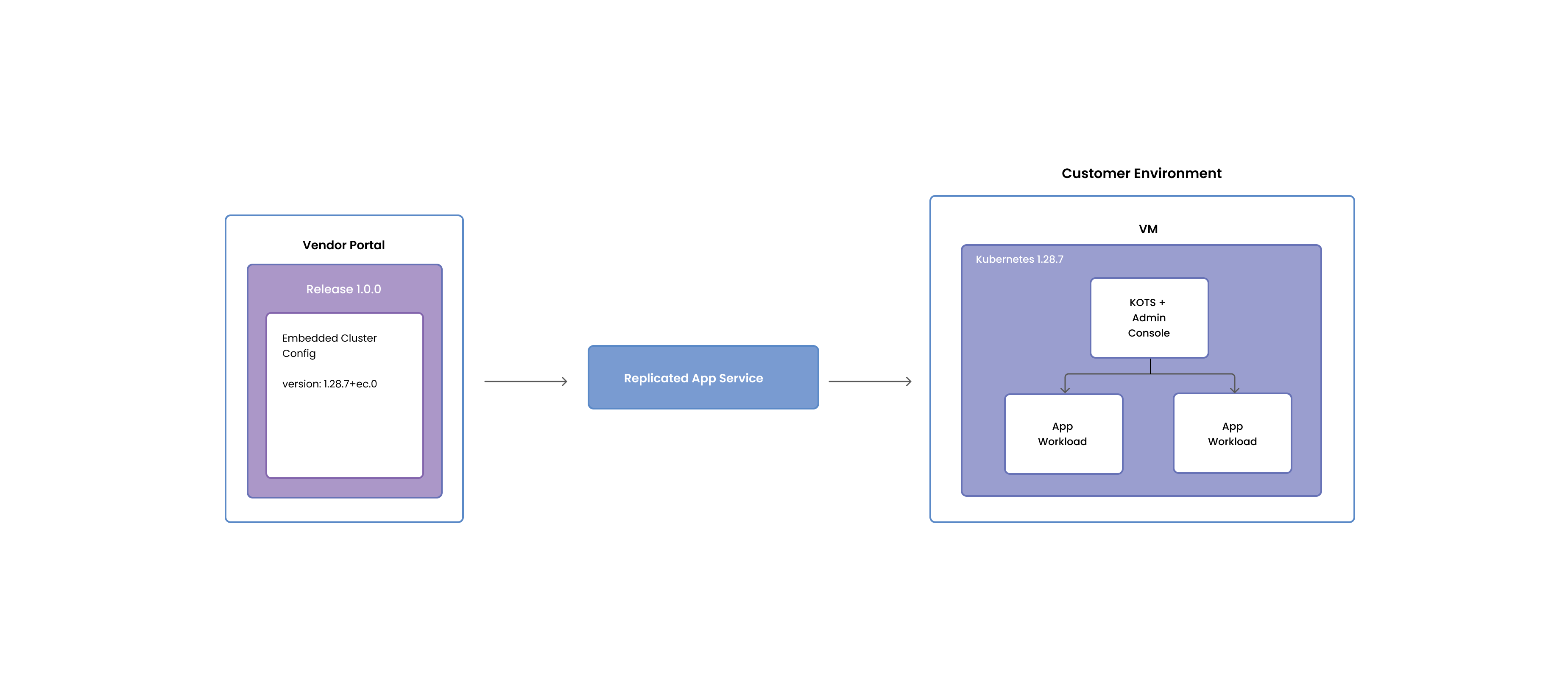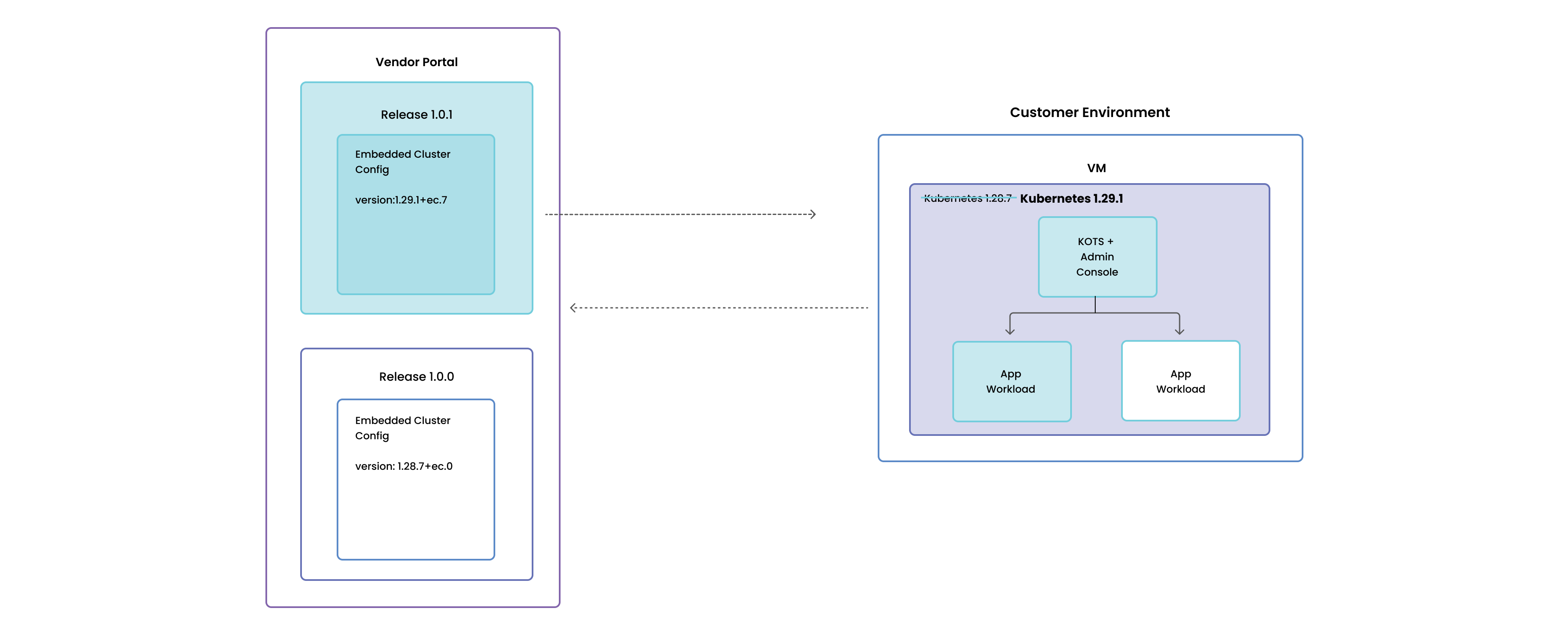
One of the key features of replicated’s commercial software distribution platform is the ability for ISVs to deploy their Kubernetes applications to customers’ environments that lack an existing Kubernetes cluster. For several years, our open-source kURL installer has made Kubernetes and on-prem deployments easier for ISVs and their enterprise customers by embedding the ISV’s application in a Kubernetes cluster that is installed on-premises with a single command.
Today we’re excited to build on that functionality by announcing the Beta release of our new embedded cluster, specifically for applications that run on a single-node Kubernetes cluster.
The new embedded cluster is completely rebuilt to deliver the same value as kURL but with some dramatic improvements.
What makes the new embedded cluster so special? First are the performance improvements. Embedded cluster installs about four times faster than kURL, requires fewer host dependencies, and supports a greater variety of operating systems with fewer system requirements.
But perhaps more significantly, embedded cluster delivers an appliance-like experience, where enterprises feel like they’re installing and managing your application rather than a Kubernetes cluster and your application.
To achieve this, a more streamlined installation experience abstracts Kubernetes while still deploying a resilient and conformant Kubernetes cluster. Most ongoing management of the cluster and the application occurs in the admin console rather than the CLI, making it intuitive for any IT admin. Deploying new versions from the admin console transparently updates the application and the cluster in tandem.
These changes make it easier than ever to deploy and manage your Kubernetes application on-premises while requiring as little knowledge as possible from your customers about things like Kubernetes.
In the near future, we’ll enable air gap installations, polish the multi-node experience (already available in Alpha), and work on migrations for existing kURL installations.
A diagram of the embedded cluster install flow:

A diagram of the embedded cluster update flow:

Want to get started? Check out our documentation for more information, and don’t hesitate to reach out to Alex Parker or your account representative with questions or comments! If you’re already using embedded cluster, make sure to update your version to 1.29.2+ec.1 or 1.28.7+ec.1. Because embedded cluster still uses KOTS to install and manage your application, you can integrate an existing KOTS application with embedded cluster in no time at all.